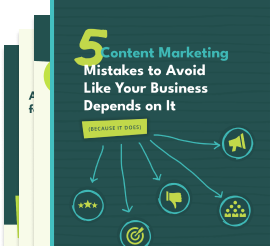Memes, pop-culture holidays, stock photos, corporate platitudes. The backbone of any good marketing strategy, right? Right!? Well, for better or worse, there seems to be an abundance of this stuff in the market. Small businesses, solopreneurs, and even well-established companies resort to these tactics.
Stock photo + National Cubicle Day + Branding + vague caption = a piece of content.
By the way, I looked up National Cubicle Day just because I thought it would be funny if it existed and would add to the corporate cheese of this whole premise…lo and behold, it exists!? We all just missed it. It was on April 28th.
And don’t even get me started on memes as a content strategy. Listen. I like memes as much as the next guy, but I always scratch my head when I see some brands use them. A well-placed and thoughtful meme for the right brand is okay. Effective even. But if you’re a SAAS company selling big-ticket software or someone trying to sell an educational course…I just don’t get it.
And the other thing I see a ton of is curated content. Sometimes that looks like sharing other people’s stuff and piggybacking on their work. Or, sometimes, it looks like sharing your stuff repeatedly.
Yeah, I know, evergreen content is a strategy. Got it. A well-timed piece of evergreen content isn’t what I’m talking about. I’m talking about posting 5-10 posts on a rotation for months. Hopefully, that sounds crazy to you, but I’ve seen it—more than once.
Now, I’m willing to give everyone the benefit of the doubt and say that most people post content like this because they have good intentions. I think deep down; they know they need to be posting content to social and the web and posting it often. So, they’re doing “their best” to ensure the content calendar looks full.
Unfortunately, it looks full alright. Full of S*@T.
The reality is that we do need to post more content more often. But more isn’t always better unless it’s more likely to get more engagement, more reach, and leave more of an impression on the people who see it so you can get more sales.
Quality Over Quantity?
I see these cheesy posts, memes, and curated content, and I wonder why. Why would you post that? In what way is that a differentiator for your brand? How does it support your brand’s story? What value is it providing to your audience? Who is benefitting from seeing your content?
We should ask ourselves these questions when we set out to make something. You see, the trick isn’t to post more of just anything. We need to post quality content. When I say quality, you probably think to yourself, crisp video, stunning images, and witty copy. Yes. We need to do all those things to the best of our ability.
That said, what I’m really saying when I say we need to make quality content is that the content should be informative, educational, entertaining, authoritative, and on message.
We’ve all heard the mantra before. Quality over quantity. Sage advice in many different arenas. However, not the best advice when it comes to content marketing. The fact is that we need to strike a balance between these two.
We can’t simply focus on quality and neglect the fast-paced reality of the digital landscape. We must do both—post more often with more purpose.
A Balanced Content Strategy
A balanced content strategy consistently delivers on-brand messages to your audience that add value to their lives. We must take a more planful approach to strike the right balance in the quality vs. quantity dilemma.
We need to get super clear on our brand foundation. Identify who we serve. Then develop brand stories to tell those people that will solve their problems. Next, we’ll need to cast those stories out into the world in various formats and mediums to connect with our target audience in new and innovative ways.
If we do those things effectively, we’ll have taken care of the quality part of the equation.
We’ll want to begin with the end in mind to solve the quantity part. We’ll need to rethink how we originate content and devise a plan of attack on how we will amplify the things we make.
This means we chase the big things first. By big things, I mean long-form video content. Longform video is the fuel that powers your content engine. This video could be a vlog, a podcast, a show, or something in between.
But once we capture the stories in video format, we can turn them into anything. Blogs, Reels, quote posts, infographics, audio, clips, emails, and anything else you can think of. And, if you’ve focused on building the quality into the shoot, everything else will be quality too.
So, to balance quality and quantity so that “more” is actually “more,” get clear on your brand and the stories it wants to tell. Capture those stories in long-form video format and let those videos power your content strategy for months to come.

